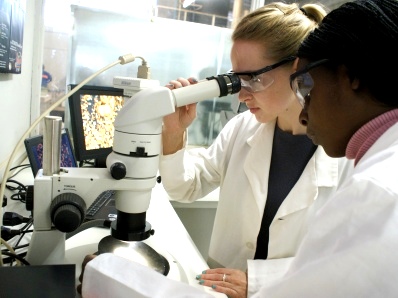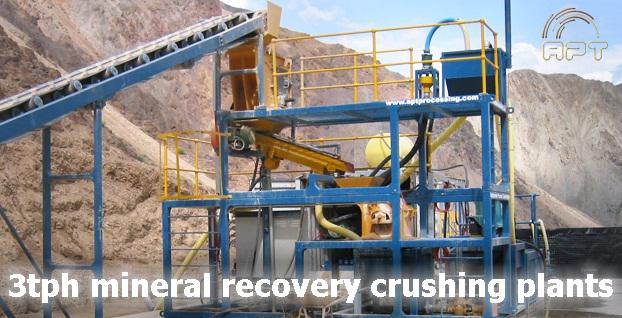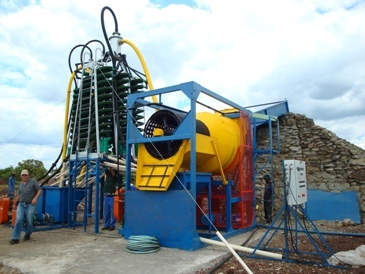Appropriate Process Technologies (APT), a South African-based modular process plant supplier, has a full order book, with many more orders in the wings. “Gold is the flavour of the day and with the boom having no foreseeable end in sight the emphasis is on simple implementation and operation parameters, along with maximum recovery in low-energy format,” says MD Kevin Woods.
Plants are designed to arrive in simple modular units that can be combined in remote, inaccessible areas. Start-up is usually one to six days, depending on the size of the plant. Constant interaction with mining process operators on the ground is undertaken to ensure ongoing upgrades are implemented at all stages, Woods explains.
Three RG scrubbing plants, one in South America and the other two in Central Africa, have been commissioned recently. These plants are for processing gold: two being for alluvial plays and the other an alluvial/hard rock combination.
“The South American plant was a logistical challenge as it was in a remote jungle site. Th is RG scrubber was implemented to rehabilitate existing riverbed material while simultaneously incorporating recovery. There was heavy rain – approximately 18 hours a day – and a new road had to be remade using an excavator to get the plant in place. Once there, it was a wet and sticky few days to get it up and running,” says Woods.
An order has been received from West Africa for multiple RG scrubbing plants – both alluvial and hard rock alluvial combo plants. Woods notes that this is in fact the first phase of a three-part phased build for 11 plants in total, to be delivered over the next eight months, including two RG800s (80 t/h) and five RG200s (20 t/h). The configurations include pure hard rock, alluvial and hard rock/alluvial combination modules. All of these plants incorporate the latest RG designs and will include Knelson concentrators to recover the gold.
In addition, a South American miner has commissioned APT to build an SG200 plant. The all-new SG200 is a plant with a screen rather than a scrubbing drum to accept loose sand that does not require tumbling to pre-disintegrate the feed. The SG200 plant is equipped with a scavenger cyclone in closed circuit with a Knelson concentrator to target particularly fine gold that has escaped the traditional sluice processing methods used to date.
This simple new plant introduces an unprecedented low capex entry level in a simple, easy-to-operate package fed by a gravel pump. “What is really exciting is that the plant is also specifically designed to recover mercury and thus decontaminate polluted areas,” Woods enthuses. The Knelson concentrator used in this plant has a special feature to enable the capture of mercury to a separate container. The South American mining company has also opted for a traditional RG200 scrubber with the same mercury recovery system.
An IC30 hard rock plant has been built and is now in production in Central Africa. “This is a very neat impact crusher and screen arrangement in a space frame with an integral GoldKacha concentrator. The entire plant, including concentrates upgrade table and internal water pumps, runs off a 40 kVA generator. The IC30, at 3t/h feed (-150 mm), is the baby brother to the IC120, which handles 10t/h (the IC120 is combined with a Knelson concentrator). “The impact crusher up-front acts as a primary and secondary/tertiary crusher in one pass,” Woods elaborates. “The well-fragmented and fine product produced by the high-impact blow-bar enhanced crushing system within the crushers ensures that gold is released in what is termed as ‘early liberation’ for easy concentration by gravity downstream. The mining company using the IC30 in this instance has begun negotiations to swarm more of the same plants in high yielding areas and they are keen to get their hands on an IC120!”
Closer to home, an order has been completed for the supply of a new-style MK2 RG200 Scrubber – a low-slung, wide-bellied scrubber rated at 20 t/h feed. “This machine will be installed in Mozambique shortly, along with a double-deck poly-screen to process bauxite. This is a repeat order for APT, with the bauxite mine already having run an RG200 on bauxite successfully for the last five years,” concludes Woods.
The mining sector, and the gold mining industry in particular, is booming, and so is the demand for modular process plants.


















